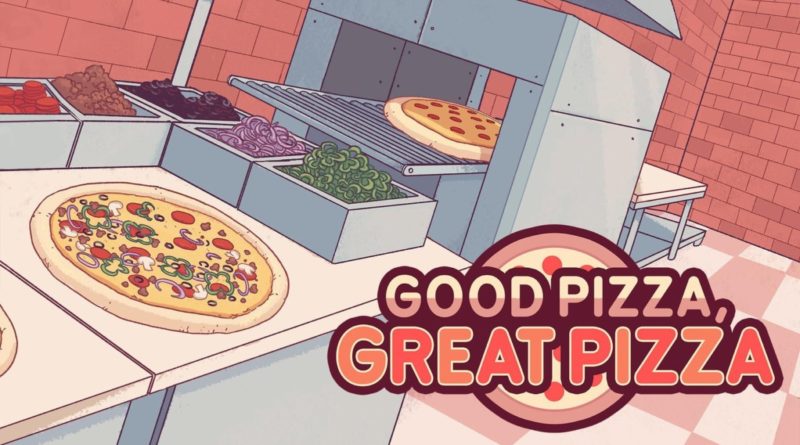Free to Play games with monetization bottlenecks.
a look into the mechanics used to get players to spend money on initially free games.

Being of a slightly advanced age, my personal memory goes back to times when video games where delivered physically, on handsized grey cartridges. Sometimes, the acquisition of these titles would be coupled with the bribery of an actual adult, such was the case with Killer Instinct for the Super Nintendo Entertainment System, the game came with a free bonus soundtrack on a physical CD.
Back in the early days of the internet, with download speeds of up to 56kb/sec the thought of delivering games through these channels, not to mention DLC, was completely out of the question.
The times are changing now and digital has become the predominant sales channel for pretty much all media, including video games. The ability to acquire a game within minutes depending on the file size has lead to different business models, as the amount of copies delivered is no longer limited by the ability to stock physical shelves with cartridges or similarly shaped containers. Ease of access has also resulted in a “try before you buy” mentality, since the sheer multitude of available options within each genre has breached palatable thresholds i.e there’s more games of any one type than any single person could ever play, so to make themselves attractive to the user, who’s already paying for phone bandwith or WIFI, many developers pick the “free to play” route.
Note that this is similar, but not identical to shareware from back in the day, where physical copies of games were distributed free of charge and even copying was encouraged, with the intent to cash in on player goodwill and creating a fanbase, which would make physical distribution through media outlets easier, since the demand would be heightened. The landscape has since undergone drastic changes, in the somewhere around 40 years of video game inception and initial distribution all the numbers have gone way up, for obvious reasons, which in turn has made sticking out of the crowd all the more difficult.
So, besides production value, story, great art and sound, a novel and/or twisted take on a genre and amazing interactions – in the gamer world known as gameplay – the game should ideally also be free. From a classic business standpoint this makes no sense whatsoever. Think about the idea of giving away free couches if you were a furniture maker.
But here comes the hook, the sinker, so to speak, since almost all of these games, I’d venture to guesstimate somewhere around 97% of them, are only initially free, in the sense that some sort of expenditure is greatly encouraged after an initial demo/trial period and since the delivery is almost instant, digital and modifyable, this encouragement can take almost any shape, sometimes behaving like a borderline digital bully, in other cases simply asking to buy a hat.
I will now list up some of the titles and their individual types of monetization attempts that I’ve tested since acquiring my first Android phone, which I’ve abstained from for quite a while, again, for obvious reasons, but also because I enjoy ye olde kinda games, that provide the full experience for a varyingly small initial fee.
One of the first titles downloaded onto my first Android phone was Alto’s Adventure

A beautiful fantastic snowboarding journey, continously going downhill, accompanied by relaxing, almost meditative soundscapes, backflipping and double backflipping over windmimlls, grinding on flagspiked lines that somehow magically have been installed in this procedural dreamscape, passing by small llama herds and noticing black outlines of birds taking off in the background until an ungraceful faceplant into a sizable rock occurs.
Here is where Alto's developers made the decision, as so many developers for mobile devices, to insert curated advertisements, abruptly changing the experience to some video of virtual soldiers fighting a battle or an incredibly generic match 3 title that does nothing for 30 seconds unless the player interacts with this demo snippet, that's supposed to encourage a full title download.
From serene snowboarding, relaxing environements and such, to a virtual casino with coin rattling, machines shaking and many blinking lights indicating possibility for frantic interaction.
"That's not what I wanted." The player most likely thinks "Turn it off."
Which, in this case, is possible. For a relatively small fee, the user can turn off all in-game advertisments and experience pure joy from bopping down hills, only interrupted by his own inability not to hit any virtual rocks or fully turn as to not land head first during a flip motion.
The user also has options to purchase in-game items, such as the wingsuit or player characters that have differing stats than the initial character.
All in all a "somewhat aggressive" approach, since the discrepancy between the actual game and the inserted adds is usually quite large, but also very effective, since the game is very calming and joyus and incredibly pretty to look at and listen to, and since it's a free download, paying 5 Euro or Dollar to be able to only experience the joy and none of the annoying stuff seems fair.
I personally found this title to be tremendously fun and the numbers I saw on the Google Play Store for this title agree.
Then we have the entire range of the recently invented idle clicker genre, a basic concept that provides spreadsheet management "fun" to the player in a multitude of re-skinned versions, where the goal is to generate higher numbers on an ever ticking sheet with light rpg elements thrown in for good measure at times, but generally all these games have the one goal to make all the numbers the user sees and manipulates turn into bigger numbers, nothing else. In all of these, basically the implemented bottleneck occurs somewhere on the player progression curve that likely has been determined by a trained economist, as the most likely time to succeed in generating a purchase by the user, due to engagement levels, time investment and other such mathy factors.
So, the player will play this, see all the numbers go up, what joy, and at some point the curve just slows down, immensely, almost to a halt.
"Spend some money to kick up your skills and make those numbers go up faster again", the game suggest here, at which point I usually uninstall. Some of the titles I found quite enjoyable due to novel or differentiating implementations are these:

and

Another type I only really came across once so far, is a game called Dan the Man. It's a throwback classic arcade run and gun platformer with nostalgic and fun pixel art, a soundtrack composed on a Game Boy and just all the perfect retro vibes.
It also is the most horribly implemented cash grab attempt of all the games tested so far.

Dan is a free download of small size, so the player will be able to jump and stuff within only a short time of initializing the download.
It starts of all nice with the aforementioned elements being utilized professionally and in a sleek and accessible manner. The problem only starts at around 20 minutes of game time, at which point checkpoints are implemented with increasing frequency. Passing one of those will save the game and trigger an unskippable add, dying also does that and the game shifts from super easy to not quite that easy anymore in similarly quick fashion. After around 30 minutes of playtime, the player will pass a checkpoint somewhere in the general area of every 25 seconds. With a 30 second add being played it quite obviously quenches the enjoyment quite a bit.
Of course there is an option to go premium and enjoy the full game with no adds for a little price, but the first 20 minutes of play did not fully convince me of the inevitable fun yet to come to fruition if the activity of playing Dan the Man was to be continued and the whole checkpoint thing was all too demanding for me to actually be fulfilled.
The third "new" genre type I discovered on my journey is the semi-social base builder, with many elements focusing on micro management of individual tasks and resources in general, generally designed with progression trees and developmental steps in mind. Two of the apparently rather popular titles of this sort are Fallout Shelter and Hustle Castle, the latter of which I've put a couple of hours into, just up to the point where the progression slows down almost to a halt until a boost is bought. Fallout Shelter was literally only, no pun intended, scratched on the surface by me, but the systems in place are generally very similar to the ones in HC.

The game, based on the information to be found on the webs developed by a Russian dev team, using a googly eye Futurama/Family Guy-esque not quite for kids but also good for grown ups art style sets of quite nicely with an empty castle and plebs knocking at its drawbridge door, asking for permission to enter and to sign themselves up to whatever task the lord of the Hustle Castle, that's the player, deems fit. Specific room types have to be created and upgraded, manned by constantly arriving new workers and inhabitants to breed the population, feed the hungry and train to slay the dragons - or other castle's armies which have been sent for the lords destruction. 2 Hours in everything is still rather simple, with some rooms upgraded and babies on the way, enemy forces repelled by upgraded ballistas defending the bridge before the drawbridge castle door, excursions to opponents castle's successfully made laden with rightfully acquired treasure for bravery in combat and so on...
But the big big adventure is yet to come and resources have to be gathered to embark on this journey, would the player like to buy some resources or wait for a few days until the requirements have been met.
Another one similar to this type, with a completely different premise and overall quite fun is

A game in which the player runs a pizza place in a cartoonish world, immediately harrassed by the competition, which also is the first customer, who demands a cheese pizza and is happy about the "disgusting" result.
The game focuses mainly on the day to day task of preparing pizzas with different toppings and remembering customer quirks in the shape of codified orders: "My sister is a vegetarian, but she doesn't actually like vegetables or fruit. She likes mushrooms though... but not on pizza." The player has to physically spread the sauce and the cheese, place the toppings evenly distributed, put the pizza in the industrial conveyerbelt oven and cut it up into 6 even slices before delivering to the hungry crowd. Time spent on each order decreases customer satisfaction and, since the cost of ingredients usually makes breaking even barely possible, the player generates revenue mostly on tips, which can be used to purchase decorative upgrades like cat clocks, arcade machines or blue tablecloths, as well as new toppings and functions that make life easier, like a tool that will always show the perfect slice or automated pizza saucing.
The game does a good job in keeping the player interested but clearly indicates that profit and quality of life could be improved by purchasing upgrades with real money.
After around 12 hours of play I decided this had to be enough and uninstalled the game, only to reinstall a day later, to find out my progress hadn't been saved in the cloud and as such a complete restart was required. Uninstalled yet again, without spending any money.
A newly found jewel is the game Castle Burn, which I'd like classify as implementing a pay to progress mechanic, differentiating itself somewhat from the classic pay to win stereotype.

The game is a tactical strategy game with quick 5 minute matches, rpg element's like leveling and collectible card elements like - collectible cards.
The player starts of by picking cards to use from his pool for each match, from 3 different tiers, each of which can be levelled up, just like the players namesake base and protective goal, the castle. Additional resources need to be gathered and camps built as to allow for a bigger army to - burn the opponents castle. Many different combinations of tactics can be implemented, such as the early game goblin swarm attack, the defense tower and tower of doom combo, which keeps the opponent at bay until a devestating game ending orbital barrage can be launched after a timer counts down to zero, Liches, a tier 3 legendary card which can only be unlocked once the player has picked 4 previous cards to upgrade his castle to the same tier, who deal heavy damage and share their lifeforce, making it harder to kill them except for with Goblin Tanks, which deal heavy area of effect damage and so on.
The trick here is the the card system and the levelling, as no player skill will live up to a horde of level 10 goblins while using level 5 goblins in their own army and the fact that some of the most powerful cards, like the legendary tier 2 Frost Mage, are only to be acquired by purchasing card packs, most of which will have very low chances of getting such gamebreakers, basically strongly enticing the player to spend at least 21+ Euro on an Arcane card pack, which can be bought with in-game crystals, 2100 of them roughly, hardly ever achievable without spending actual money, since the average daily crystal income with around 5-10 daily matches would be somewhere in the general vicinity of 20.
Likely no coincidence, then, that the top ranked player of the game since its release for the western market, the game is developed by a Korean dev team, is named "Gachigasm".
Finally, I'd like to point out two outstanding titles of the free to play assortment I've had the pleasure to test so far and those are Hungry Hearts Diner and Shadowgun Legends. Drastically different in almost all elements, I'll begin with HHD.

Very cute, is what first comes to mind when looking at above imagery and that is indeed the case, since the entire game takes place in a lovely old grannies restaurant, which she is managing in her husbands absence, while he tries to cure himself of an illness. Tasked with serving customers the player has a variety of food items and dishes to choose from, which should best be arranged in the perfect sequence, while also taking note of the favorites of returning customers and their dislikes. Many little story segments will be unlocked throughout the game, giving a deeper look into the granny and her hungry customers, while also implementing light managerial puzzles, like not restocking nato. The game can be completed within a few hours, is deeply emotionally engaging and just fun through and through and - it is completely free. The player may purchase items but is never required to and not buying anything also isn't a hindrance.
Shadowgun Legends is a mobile FPS shooter with mmo elements that runs quite well on my midrange phone and looks and plays very nicely, espescially since phone screens have gotten smoother, as to have the finger that would traditionally rest on an analog stick or a mouse not get stuck too much, which still happens every now an then, dry fingertips.

SL is very straightforward, provides a lot of self reflective humor and many easter eggs with little nodds to classics of the genre. The story is ridiculous and the ability to buy a cosmetic rubber ducky life saver item underscores this quite intensely, but it also showcases the fact, that the entire game can be enjoyed without making any real money purchase, if not to show the developers some support while wearing a giant cute cat sticker on your chest.
All these games were utilized to facilitate an understanding of the different business and monetization strategies implemented by a range of developers. While some are more obvious and others outright generous, the general consensus here is that in almost all cases Free to Play games are exactly not that.
Mental levers will be pulled to make players spend money on something that they initially didn't. Emotions will be triggered at specific moments or during predefined developmental curves as to appeal to the addictive nature of the user and get him to stay engaged with the material while repeating the same or very similar processes continously and repeateadly. Virtual blockades will be built while telling the user "only 5 bucks to push through!" and all in the name of fun.
Read more about:
BlogsAbout the Author(s)
You May Also Like













